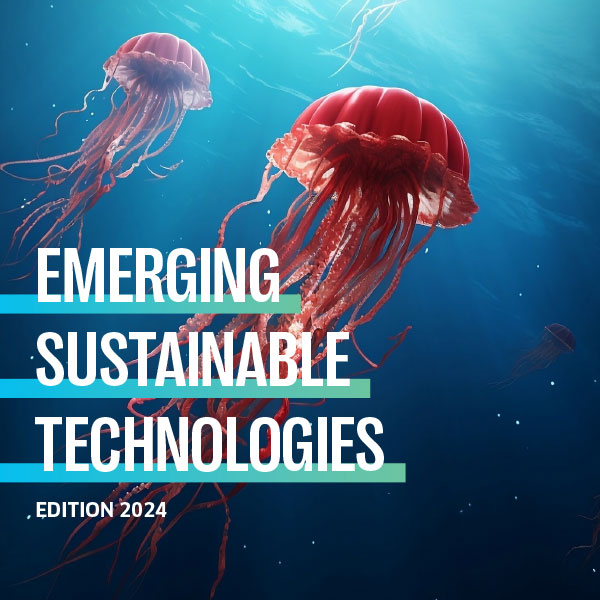


Oceans will play a critical role in achieving our climate goals and moreover, not achieving our climate goals will deteriorate the crucial functions our oceans play.
Oceans and seas cover 70% of the surface of the globe. Not only do they support intercontinental trade flows, but they are home to incredibly varied marine life and provide us with food, energy, recreation and holiday spots. Moreover, more than 60% of the global population lives within 150 km of the coast.
Oceans also help regulate the world’s climate and act as a large long-term carbon sink. Of the nearly 40 gigatons of CO2 emitted from fossil fuel use every year, 13 gigatons are captured on land and around 9 gigatons by the oceans, leading to a yearly net increase of around 18 gigatons of fossil fuel-generated CO2 in the atmosphere.
Whatever we come up with in our development of novel offshore technologies, we must never forget that the need to protect oceans’ vital functions has to be a top priority.
The oceans’ potential to yield powerful solutions to the climate challenge has received much attention over the past year. The insight that the ocean can contribute to the fight against the climate crisis led to the publication of the Ocean Climate Action Plan (OCAP) in the Spring of 2023.
The OCAP plan, for example, outlines the ocean climate action needed to meet three goals:
Offshore fixed-bottom or floating wind energy can now be considered a mature, scalable technology. Meanwhile, wave and tidal energy, osmotic power, floating solar, large-scale offshore energy storage and other approaches are still in their early phase of development, mainly due to high costs and technical challenges related to harsh conditions at sea compared to land-based solutions.
The second OCAP goal consists of conserving and restoring coastal and marine habitats that naturally store carbon (“blue carbon”), and of expanding protected areas in the ocean (“marine protected areas”) that can help us respond to climate change. These solutions, also referred to as geo-engineering approaches, have long been subject to controversy, and even considered by many to be a no-go area. Yet, they have received more attention recently. Without sufficient research into their effects, both positive and negative, their deployment potential cannot be properly understood. Despite the controversies, nature-based ocean climate action can generate multiple benefits for the response to climate change, stem the loss of biodiversity, and help support populations and communities, provided it is conducted properly.
Ocean is a resource: e.g., for clean drinking water and as a source of minerals. Ocean and sea water contains many elements of Mendeleev’s Table. This means the oceans could become part of solving the critical raw mineral challenge generated by the massive requirements of our clean energy technologies such as photovoltaics, wind turbines and batteries.
Research is needed to determine whether we can extract these minerals in an efficient manner, and to gauge the impact this would have on oceanic biodiversity. This is especially pertinent to deep sea mining, where large aggregates of minerals would be extracted from the seabed. That process could create local disturbances in the ecosystem, and must be understood in sufficient detail before massive scaling investments can be made.
Before any massive adoption of offshore technologies, more research is needed to better understand their impact. Advancing ocean climate action requires robust and sustained ocean and climate science. The impact of these technologies on offshore biodiversity is, in this respect, of utmost importance.
Current life cycle assessment and social impact assessment methodologies allow calculating the footprint of implementing technological solutions. In doing so, they focus on understanding the burdens that come with their implementation. But we also need to develop methodologies that allow us to estimate their social and environmental handprint, i.e., the accompanying benefits.
Today there are no studies that comprehensively assess both the positive and negative impact of emerging marine technologies on the terrestrial and aquatic ecosystems where they are deployed. Burdens and benefits are represented as a footprint and handprint respectively. The comparison of the footprint and the handprint can support choices and decision-making. This offers a first step towards a comprehensive socio- sustainability assessment of existing or novel marine activities and technologies.
We are experiencing a world where the dominant geopolitical rationale incudes the assertion of power and confrontation. Because it concentrates stakes and resources, the ocean is destined to become one of the key areas of this confrontation. We should have in mind that this dimension will very probably have a major impact on future technological choices and developments.
Key to succeed in the energy transition is the idea that all these technologies will need to interact. There is no single miracle or standalone solution. The future will be a system of interconnected systems and technologies. There is no doubt in our minds that the journey ahead is too complex and too resource intensive for a single company, a single industry, a single country, or even a single continent to deliver the kind of effective solutions the world needs.
What is equally obvious is that oceans will play a critical role in achieving our climate goals and moreover, not achieving our climate goals will deteriorate the crucial function(s) our oceans play.
Sign up for the ENGIE Innovation Newsletter